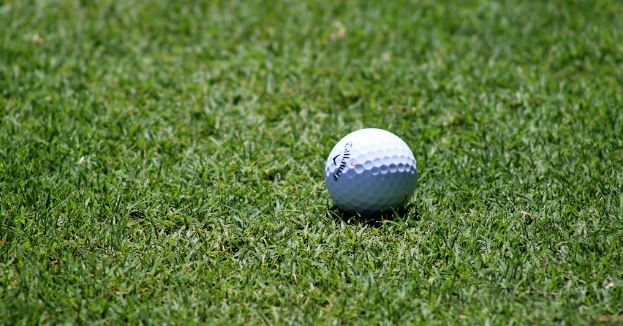Your courses are highly dependent on the quality and health of their greens, which serve as the focal point of every hole. Keeping these greens in pristine condition is a meticulous process requiring the right balance of soil properties, turf management, and environmental controls. One often overlooked factor is the use of inorganic soil amendments and their role in sustaining optimal conditions for turfgrass. Among these amendments, diatomaceous earth stands out for its unique ability to enhance gas exchange in the soil profile, contributing to healthier, more resilient greens.

The Importance of Soil Structure in Golf Greens
Your greens demand specific soil conditions for growth. They thrive in well-aerated soils with excellent drainage, as compacted or poorly aerated soils can lead to shallow root growth, waterlogging, and an increased risk of turf diseases.
To maintain these conditions, the soil must have a balance of macropores and micropores—macropores allow for the movement of air and water, while micropores retain water for root uptake. If the soil becomes compacted or its structure degrades, both air and water movement can be restricted, leading to anaerobic conditions that stifle root growth and compromise the health of your greens.
The Role of Inorganic Amendments in Golf Green Maintenance
Inorganic soil amendments, such as sand, zeolite, calcined clays, and diatomaceous earth, play a critical role in maintaining the structure and functionality of soils used in golf greens. These materials are added to the soil profile to improve aeration, drainage, and nutrient availability, all of which are essential for maintaining a healthy root zone.
Sand, for example, is commonly used to prevent soil compaction and promote drainage. However, relying solely on sand can lead to issues such as reduced water retention and nutrient leaching. This is where other inorganic amendments like diatomaceous earth become beneficial. They offer a more sophisticated way of balancing soil properties, enhancing both aeration and water retention while improving nutrient availability.
Diatomaceous Earth: Enhancing Gas Exchange in the Soil Profile
Diatomaceous earth (DE) is a naturally occurring, porous material derived from the fossilized remains of diatoms, a type of hard-shelled algae. Its structure is characterized by a high degree of porosity, which gives it unique properties that are highly beneficial to soil management, particularly in golf greens.
The porous structure of diatomaceous earth creates a high amount of open pore space in the soil when incorporated into the soil profile. This open pore space facilitates enhanced gas exchange, allowing oxygen to move more freely into the root zone while expelling carbon dioxide and other gases produced by root respiration and microbial activity.
In the context of turfgrass management, this improved gas exchange promotes healthier root systems by preventing the buildup of toxic gases and ensuring that roots receive an adequate supply of oxygen. This is crucial for sustaining the dense, low-cut grass characteristic of golf greens, where root depth is often shallow, and oxygen availability is limited due to frequent foot traffic and mechanical compaction.
The Science Behind Improved Gas Exchange
The key to understanding why diatomaceous earth is so effective lies in its physical structure. DE particles have a honeycomb-like framework that creates numerous small pores. These pores, when mixed into the soil, increase the number of macropores available for gas movement. Unlike organic matter, which breaks down over time, DE remains stable in the soil, providing a long-lasting solution for maintaining an open soil structure.
Enhanced gas exchange not only benefits the roots by providing oxygen but also helps in controlling soil temperature and moisture. By allowing gases like carbon dioxide to escape more efficiently, DE reduces the risk of anaerobic conditions, which can foster diseases. The increased aeration also helps soil microbes thrive, aiding in nutrient cycling and improving the overall health of the soil.
Long-Term Benefits of Using Diatomaceous Earth in Golf Green Management
Incorporating diatomaceous earth into the soil profile provides long-term benefits that go beyond immediate improvements in gas exchange. The material also aids in maintaining a balanced soil moisture level, as its porous nature helps retain moisture in dry conditions while allowing excess water to drain during periods of heavy rainfall. This dual action minimizes water stress on the turfgrass and reduces the need for frequent irrigation.
Furthermore, DE’s ability to stabilize soil structure over time reduces the frequency of aerification and topdressing required to maintain optimal conditions. This not only saves time and labor but also reduces the disturbance to the playing surface, ensuring consistently high-quality greens throughout the season.
Golf Course Turf Management Requires a Nuanced Approach
Maintaining healthy, high-performance golf greens requires a nuanced approach to soil management, where inorganic amendments like diatomaceous earth play a pivotal role. By enhancing gas exchange and stabilizing the soil structure, diatomaceous earth helps create an environment that supports deep root growth, efficient water use, and strong microbial activity. As all of you continue to seek sustainable solutions for turfgrass management, diatomaceous earth offers a valuable tool for ensuring the longevity and vitality of your greens.



